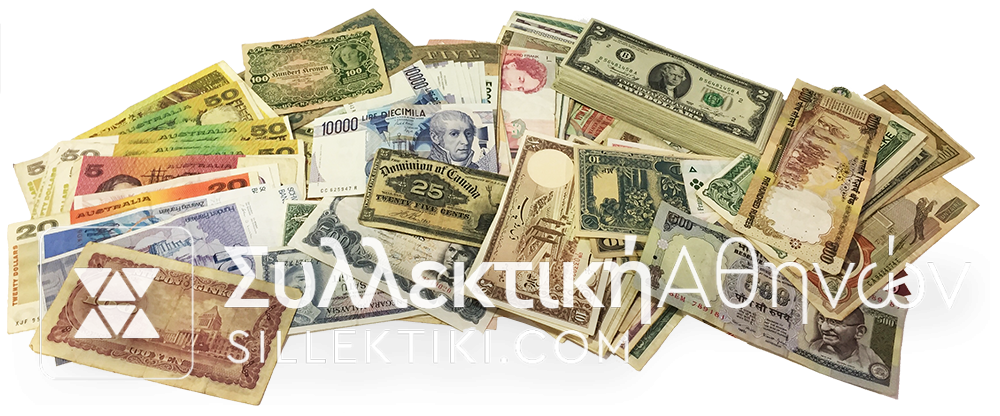BANK SELLING FREQUENTLY ASKED QUESTIONS

I have old drachma notes that I didn't have time to exchange at the Bank. Do they have any value?
To be considered collectible, drachma banknotes that were in circulation before the use of the euro must be uncirculated (collared from bundles or entire bundles).

I have various old Greek banknotes. How much does it cost;
The right thing to do is to visit us and let us evaluate them, because many parameters must be checked that will characterize them as collectibles or not.
In general, Greek banknotes from 1926 to 1944 are of low value, without this being a rule, because even here there are exceptions such as various special editions (specimen, errors, extraordinary editions and other peculiarities).
The Greek banknotes that are definitely of interest are from 1923 and before, but also the banknotes from the period 1945 to 1956.
And in banknotes, as in coins, the value is determined by many components, the main ones of which are their condition and rarity.
Why do I see banknotes similar to my own at completely different prices on the Internet?

First of all, you should be sure of the reliability of the page you visited (if it is a serious site, if it is a valid price list of banknotes and not private ads, etc.). Besides, the prices of a banknote are determined by many factors such as condition, rarity, type, variety, special editions, etc.

I have foreign old notes. Do you buy them? and how much do they cost?
As with Greek banknotes, so also with the banknotes of other countries there are collectors and non-collectors. There is no way to properly price them yourself if you have no knowledge of the item. You should visit us to make an assessment.

How can I be sure that someone's assessment of my collection will be correct?
The most important thing here is the reliability and specialized knowledge of the appraiser both in grading (assessing the condition and rarity of the banknote) but also his commercial experience in the field for the correct pricing.
COMPANY
ELECTRONIC STORE
SUPPORT
Copyright 2025© Συλλεκτική Αθηνών. All rights reserved. Created by CLC Web Soluctions.